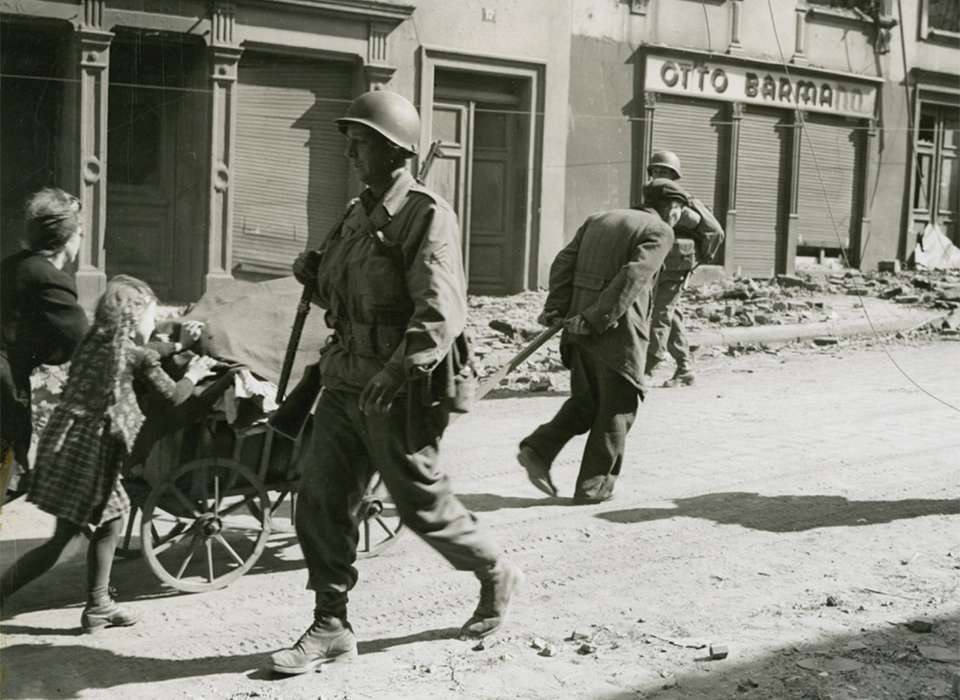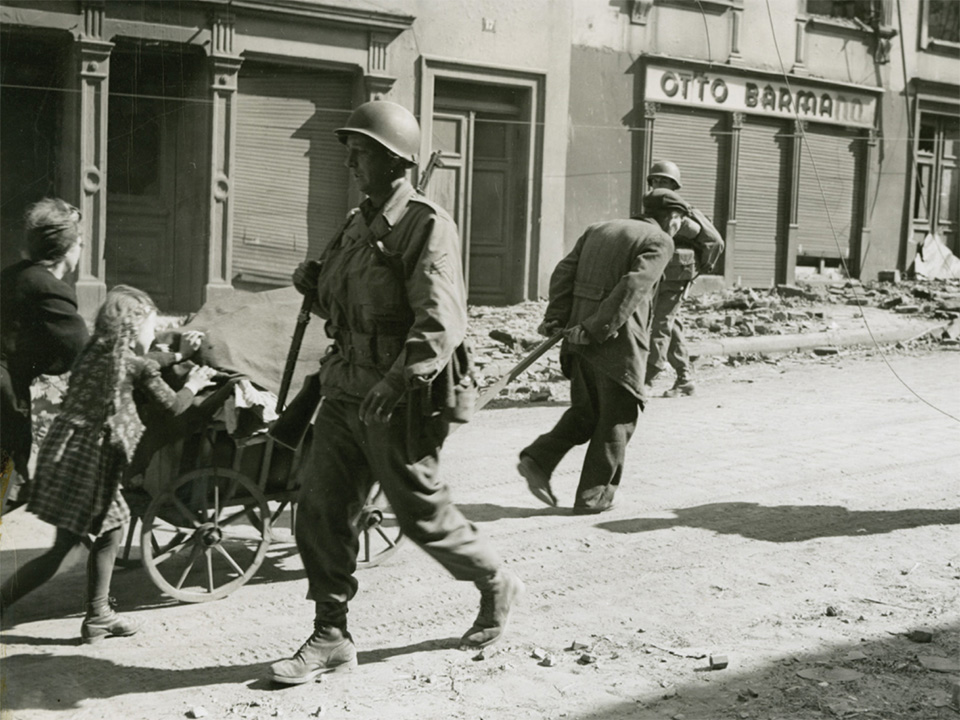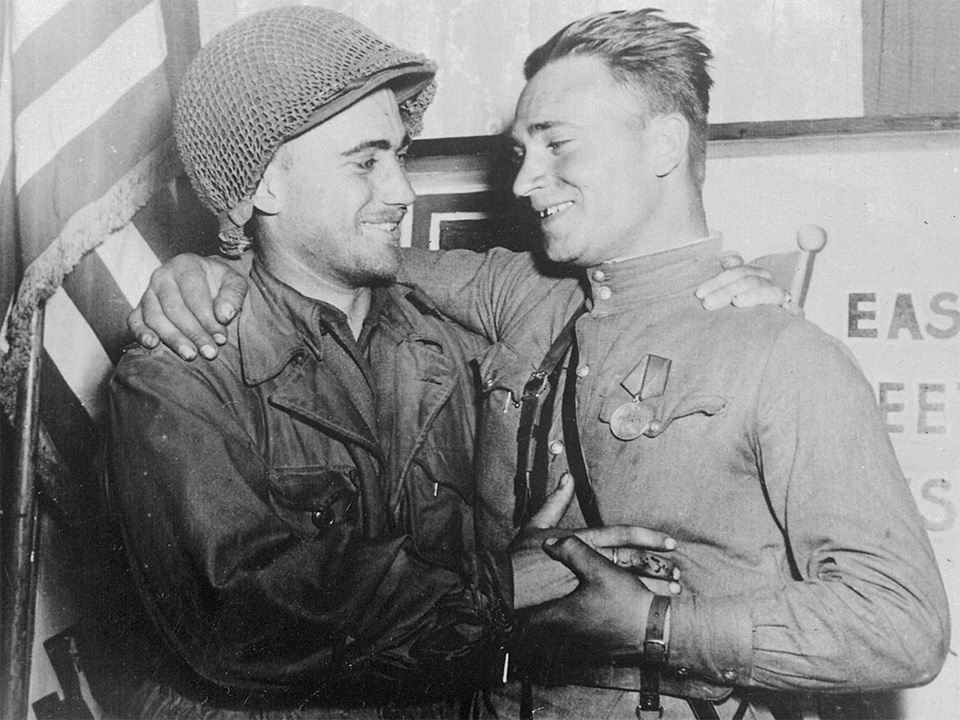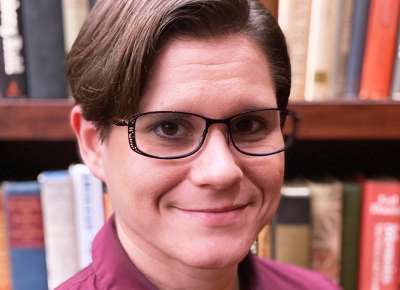The formal surrender of Nazi Germany on May 8, 1945, followed by the announcement of Japan’s surrender on August 15, 1945, brought about massive celebrations that filled streets all over the Allied world. After years of nighttime blackouts, enforced to protect against aerial attacks, cities lit up once again. In Paris, the Opera House shone with lights colored red, white, and blue—on for the first time since September 1939. At 8:00 p.m. on May 8, according to the New York Daily News, “all the jewels in Broadway’s crown were full aglow, and the great chunky masses of humanity seemed to swim in the light and their spirits were warmed by it.”
Outbursts of joy may have swept across the victorious Allied countries, but amongst the defeated, US forces encountered devastation and hostility. To those in Germany and in Japan, the Americans who came into their countries did not arrive as liberators but as conquerors. The troops tasked with occupying these regions faced a momentous challenge, one of restoring order, keeping the peace, and building democracy.
For those living in Europe, scarce resources, displaced persons, and devastated cities placed overwhelming demands on the occupying forces. The diary of Richard E. Berlin, President of the Hearst Foundation during World War II, captures a first-hand view of the postwar conditions endured by the people living in countries directly affected by the war. Richard Berlin was one of the first American civilians to visit postwar Germany, traveling on an invitation from Secretary of War Henry Stimson to document the conditions on the ground. When visiting Germany’s capital city, he described the scene: “On all sides we saw overturned tanks and cars. In an area of about 10 miles wide in the center of the city every building is smashed and destroyed. Berlin ordinarily has a population of 4,000,000 people. Now it is estimated there are 3,500,000 population, living in cellars, hovels, and anywhere for shelter… Continually you see food lines—hundreds of people standing in queues for food.” He went on to describe Berlin as truly a “dead city,” and that “words cannot describe the horrid and pitiful existence of its people.”
Divided Forces, Rising Tensions
The Allied forces holding the territory formerly under Nazi control divided the land into four zones of occupation, with the Americans basing their headquarters in Frankfurt. Initially, the Allies planned to govern Germany collectively through the Allied Control Council, which operated until relations within the Council began to break down in 1946. At the outset of occupation, the Council issued rules prohibiting fraternization to avoid confrontation or violence between the German people and the occupying forces. Initially, such prohibitions included all interactions with German citizens; Americans could not even speak to children. While strict, such rules sought to protect the occupying troops and the German citizens and also to give the forces on the ground time to adjust to their new role. Many US servicemembers did not receive training for interacting with citizens. John “J.J.” Witmeyer, a soldier in the US Army, commented on the difficulty that came with this sudden change in the soldier’s role, stating,
“You were not exposed to civilians [during combat], suddenly you got to feed them, you have to keep some discipline, you got to have laws, and that’s what the military government does.”
John “J.J.” Witmeyer
In spite of the Allied Control Council’s intended purpose of collective governance, cooperation between the Soviet forces and the other Western powers steadily broke down, leading to new sources of tension and problems in occupied Europe. Soviet forces held a special hatred of the German people and word of the horrific acts that occurred in areas occupied by the Soviets soon spread across Germany. Tales of homes and villages ransacked and destroyed and of violent attacks on German women by Soviet soldiers became well known to both the people of Germany and the occupying American forces. These stories, bolstered by years of propaganda against the invading Allies that warned of such acts, led to heightened tensions between the occupiers and the occupied.
This tension fed resentment toward the American forces that only grew as it became clear the Americans had an abundance of resources at their disposal in comparison to the German people. With more rations than either the British or French, the Americans enjoyed luxuries the Germans lacked. A British political advisor in Germany commented in February 1946 that “the Americans have built up against them a strong feeling of resentment, if not hate, and of contempt among nearly all classes of the German population.” The enforcement of non-fraternization rules did little to ease these tensions. Often, in spite of the rules, German women sought to gain access to these resources by attempting to win a soldier’s favor, feeding the anger of many German men.
Distrust directed toward the occupying forces made US troops wary of any kind of resistance they might encounter. Troops enforced strict curfews to prevent subversion or acts of violence. Commanding officers advised all US troops to keep firearms with them at all times, even when off duty. Fear of resistance fighters persisted among the American forces. In the final days of fighting, German broadcasts actively encouraged resistance against the invading Allied troops. While most German citizens were not interested in engaging in such subterfuge, pockets of resistance fighters, known as Nazi “Werewolves” kept American soldiers on edge. Nazi broadcasts labeled any American on German soil as “fair game,” and radicalized guerrillas took up the call. Limited, localized acts of violence against the occupying forces did occur, but slowly came to an end by 1947.
A staged photograph featuring 2nd Lt. William Robertson and Lt. Alexander Sylvashko to commemorate Elbe Day, the day American and Soviet troops met at the Elbe River in Germany. National Archives and Records Administration, ww2-121.
In the midst of fighting resistance and working to maintain order, US forces began a program of Denazification to purge Germany of the Nazi Party’s ideology. While in power, Nazis used the education system, public broadcasts, and other means of promoting Nazi beliefs. Following the war, the Allied Control Council issued directives calling for the removal of Nazi symbols, the forced disbandment of Nazi groups or organizations, and the end of teaching Nazi ideology in schools. Added to this effort, commanding generals, including Dwight D. Eisenhower and George S. Patton, ordered German citizens—especially those who were members of the Nazi Party—living near concentration camps to walk through the camps and witness the horrors of the Holocaust firsthand. This effort intended to prevent a resurgence of Nazi ideology, document the atrocities, and undercut any effort to diminish or erase what the Nazis did.
Occupation and Reform in Japan
The American experience in Japan differed in significant ways from what occurred in Europe. Unlike the European occupation, which began with the capture of Aachen in October 1944, the occupation of Japan did not go into effect until two weeks after Japan announced its surrender in August 1945. Further complicating the process was the reliance on a smaller occupying force; the Americans simply did not have as many boots on the ground in Japan as they did in Europe. This situation caused certain American leaders such as General Douglas MacArthur to argue that keeping the Japanese Emperor Hirohito in office was essential for the success of this process. As a part of the agreement made with US President Harry Truman, Hirohito retained his position as Emperor, but as a figurehead with notably reduced power. Still, the Emperor’s influence helped to keep the balance of power shifted in favor of the Americans during the period of occupation.
Japanese reactions to the occupying Americans featured stark contrasts to the experiences of those occupying Germany. American anthropologist Jules Henry documented how the Japanese people responded to surrender and adjusted to life under occupation. Henry noted his surprise at the friendly behavior the Japanese directed toward the Americans. He wrote, “This friendliness was not merely superficial, subservient, or ‘correct’ behavior.” Henry went on to cite a survey conducted in Japan from November to December 1945 in which 70 percent of respondents expressed satisfaction with occupation itself. He credited this reaction with a broader sense of apprehension many Japanese citizens had toward war with the United States, claiming that most had not wanted the war to happen in the first place. By the war’s end, fatigue and lack of resources, coupled with the relentless bombing of Japanese cities, led to a rise of resentment the Japanese directed toward their own leaders, rather than toward the American forces.
MacArthur took on a leading role in setting the course of occupying Japan. Through his office as Supreme Commander, MacArthur called for the establishment of martial law, which was to remain in effect until US troops established themselves throughout Japan. The occupation of Japan had two primary goals: demilitarization and democratization. Demilitarization included the permanent disarmament of Japan, which resulted in Japan’s official renouncement of the right to have a military force. MacArthur also oversaw the establishment of a new Japanese constitution that implemented reforms to make Japan more democratic. Efforts to democratize the Japanese economy were a significant part of this program. The dissolution of the zaibatsu, family-run monopolies that controlled roughly 49 percent of all capital investment in Japan by 1945, intended to break apart and distribute control of Japanese economic production.
Japanese politicians who hoped to undo the changes put into place by the Americans faced deconstructing an intricate series of laws—laws written to alter Japanese society in fundamental ways. In spite of efforts to roll back occupation-era reforms, the changes did prove effective in limiting authoritarian rule and encouraging more diverse economic development. However, as Cold War tensions led to the start of a new war in the Korean peninsula, Japan once again fueled its energy into wartime production, this time in support of the United States. For this partnership to work, the United States found it easier to work with the Japanese conservatives who previously objected to the post-WWII reforms. From 1947 through the end of the occupation period in 1952, efforts to prevent the spread of Communism across Asia became more important to the Americans than democratizing Japan. In spite of this, the two years of democratic reforms put in place following the immediate end of World War II proved enduring even in the midst of rising Cold War conflicts.

Like this article? Read more in our online classroom.
From the Collection to the Classroom: Teaching History with The National WWII Museum.
Kristen D. Burton, PhD
Kristen D. Burton, PhD, is a former Teacher Programs and Curriculum Specialist at The National WWII Museum.
Cite this article:
MLA Citation:
APA Citation:
Chicago Style Citation:








![Max Fuchs, New York City cantor, sings as Rabbi Sydney [sic] Lefkowitz, Richmond, VA, conducts the first Jewish services from Germany.](/sites/default/files/styles/max_650x650/public/2025-10/image1.jpg)


